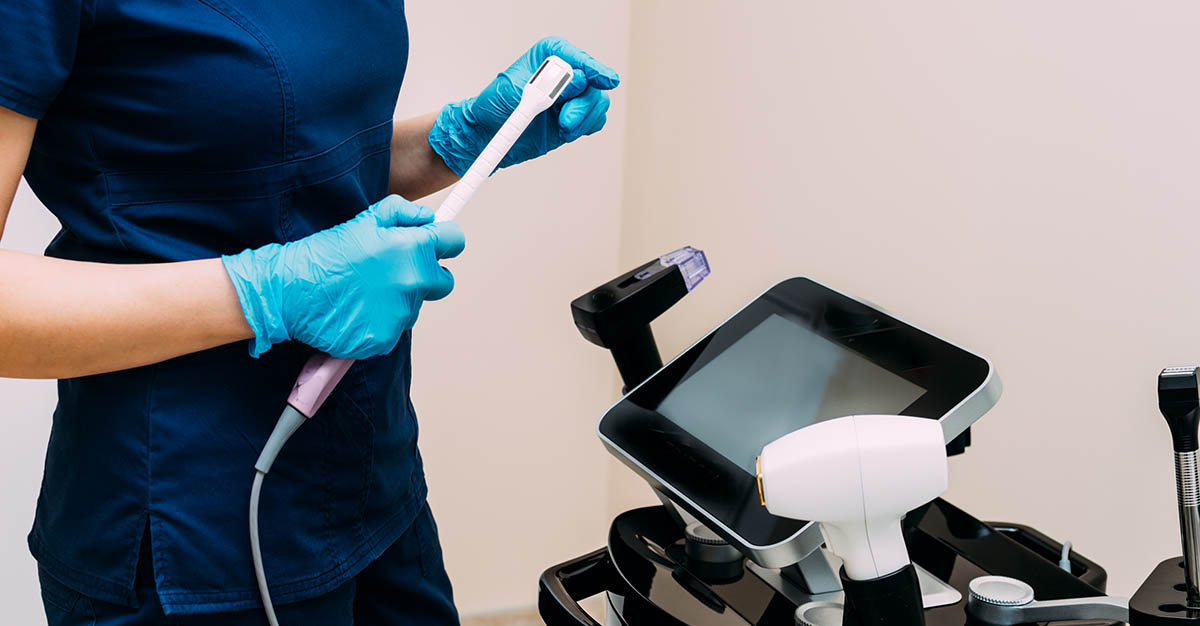Table of Contents:
- Understanding Vaginal Rejuvenation
- What Is FemiLift?
- Benefits of FemiLift
- Surgical Vaginal Rejuvenation: An Overview
- Common Surgical Procedures:
- 1.Labiaplasty
- 2.Vaginoplasty
- Potential Risks and Complications
- FemiLift vs. Surgery: Key Differences
- Why Women Are Choosing FemiLift Over Surgery
- Who Is FemiLift Ideal For?
- References
Vaginal rejuvenation has emerged as a transformative solution for women seeking to enhance their intimate health, aesthetics, and overall quality of life. While surgical options such as labiaplasty and vaginoplasty have been commonly used for years, a shift towards non-surgical alternatives has been evident. Among these, FemiLift non-surgical vaginal rejuvenation is increasingly preferred by women for its efficacy, safety, and convenience.
This article aims to provide an in-depth comparison between FemiLift and traditional surgical procedures, offering scientific insights into why women are opting for non-surgical alternatives.
Understanding Vaginal Rejuvenation
Vaginal rejuvenation refers to a range of procedures aimed at enhancing vaginal functionality, appearance, and overall health. Treatments often address vaginal laxity, dryness, stress urinary incontinence, and cosmetic concerns. While surgical options involve invasivetechniques that permanently alter vaginal structures, non-surgical approaches are typically energy-based therapies that work by stimulating tissue regeneration and collagen production without surgical incisions.
What Is FemiLift?
FemiLift non-surgical vaginal rejuvenation is a revolutionary, minimally invasive procedure that employs CO2 laser technology to stimulate collagen production and enhance vaginal tissue elasticity. It works by delivering controlled, fractional laser energy to the vaginal walls, promoting mucosal revitalization and improved structural support.
Benefits of FemiLift:
- Quick, painless procedure typically lasting less than 30 minutes.
- No downtime, allowing patients to resume daily activities almost immediately.
- Improved vaginal tightness, lubrication, and sexual satisfaction.
- Enhanced urinary control in cases of mild stress urinary incontinence.
Studies have demonstrated the efficacy of CO2 laser treatments like FemiLift in improving vaginal laxity and enhancing sexual function1 . Additionally, patients report high satisfaction rates due to the comfort and convenience of the procedure2 .
Surgical Vaginal Rejuvenation: An Overview
Surgical vaginal rejuvenation includes procedures such as labiaplasty and vaginoplasty, which require incisions, suturing, and extensive recovery periods. The aim of these surgeries is to enhance the aesthetic appearance of the vulva or restore vaginal tightness through structural modifications.
Common Surgical Procedures:
1. Labiaplasty
This is a surgical procedure aimed at reducing the size or reshaping the labia minora and/or labia majora to improve aesthetics, reduce discomfort, or enhance sexual satisfaction. It involves surgical excision of excess tissue, which may result in scarring and requires significant downtime for recovery.
2. Vaginoplasty
This procedure focuses on restoring vaginal tightness by surgically tightening the vaginal muscles and surrounding tissues. This procedure is often sought after childbirth or due to aging-related laxity. While effective for severe cases, it is an invasive procedure with potential risks such as infection, pain, and scarring.
Potential Risks and Complications:
- Infection, scarring, bleeding, and pain.
- Extended downtime, often requiring weeks of recovery.
- Possibility of unsatisfactory results necessitating revision surgeries.
Though effective in some cases, surgical procedures come with inherent risks and may not be
suitable for women seeking quick recovery and minimally invasive solutions.
FemiLift vs. Surgery: Key Differences
| Aspect | FemiLift Non-Surgical Vaginal Rejuvenation | Surgical Vaginal Rejuvenation |
|---|---|---|
| Procedure Type | Non-invasive, CO2 laser-based | Invasive, requires incisions and suturing |
| Recovery Time | Minimal, with no downtime | Weeks of recovery, potential pain and swelling |
| Risks & Side Effects | Minimal, minor discomfort | High risk of complications and scarring |
| Cost | Generally more affordable | Higher cost due to surgical fees and anesthesia |
| Effectiveness | Effective for mild to moderate concerns | Effective for severe structural issues |
Why Women Are Choosing FemiLift Over Surgery
The demand for FemiLift non-surgical vaginal rejuvenation is growing, particularly among women seeking effective, low-risk solutions for female rejuvenation. The reasons include:
- Safety and Convenience: Unlike surgical procedures, FemiLift does not require anesthesia or incisions, making it a much safer and hassle-free option.
- Minimal Downtime: Patients can resume their daily activities immediately, with no need for prolonged recovery.
- Effective Results: Studies show significant improvement in symptoms of vaginal dryness, laxity, and urinary incontinence post-treatment3,4.
- Cost-Effective: With fewer associated fees, FemiLift cost is generally lower than traditional surgeries.
- Painless Vaginal Rejuvenation: The procedure is well-tolerated with minimal discomfort, making it a popular choice for women seeking vagina-tightening procedures and vagina-tightening treatment without invasive techniques.
Who Is FemiLift Ideal For?
FemiLift is most effective for women experiencing mild to moderate symptoms of vaginal laxity, dryness, or stress urinary incontinence. It is also beneficial for those seeking improvedsexual satisfaction and vaginal lubrication. However, women with severe structural issues or those looking for permanent anatomical changes may still require surgical intervention.
The Importance of Choosing a Qualified Provider
Choosing a certified professional is crucial to ensure the safety and efficacy of the procedure. Board-certified gynecologists or cosmetic gynecologists specializing in minimally invasive vaginal regeneration are the most qualified to perform FemiLift.
FemiLift: The Future of Non-Surgical Vaginal Rejuvenation
The comparison between FemiLift non-surgical vaginal rejuvenation and surgical vaginal rejuvenation clearly demonstrates why non-surgical methods are gaining popularity. With minimal risks, effective results, and virtually no downtime, FemiLift offers a compelling alternative for women seeking vaginal rejuvenation.
At our vaginal rejuvenation clinic in New Jersey, we offer FemiLift non-surgical vaginal rejuvenation and other effective feminine rejuvenation treatments tailored to enhance your intimate health and confidence. Our board-certified specialists are dedicated to providing safe, painless vaginal rejuvenation procedures with minimal downtime, ensuring you achieve the desired results without the complications of surgery. Contact us today to schedule a consultation and explore the best vagina tightening treatment options for your needs.
References
- Gambacciani, M., et al. “Vaginal erbium laser: The second-generation thermotherapy for the genitourinary syndrome of menopause.” Climacteric 18.5 (2015): 757-763.
- Salvatore, S., et al. “Early regenerative modifications of human postmenopausal atrophic vaginal mucosa following fractional CO2 laser treatment.” Lasers in Medical Science 30.1 (2015): 429-436.
- Samuels, J. B., & Garcia, M. A. “Treatment of vaginal laxity and atrophy with a novel fractional CO2 laser—histological and clinical results.” Journal of Laser Applications 27.3 (2015): 1-6.
- Zerbinati, N., et al. “Microscopic and clinical evaluation of fractional CO2 laser for treatment of vulvovaginal atrophy.” Dermatologic Therapy 30.1 (2017): 83-87.
- Vizintin, Z., et al. “Novel minimally invasive VSP Er:YAG laser treatments in gynecology.” Journal of the Laser and Health Academy 4.1 (2012): 46-58.







